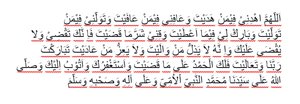

If we see a sculpture, we know there’s a sculptor a pot, a potter. (Get it? Denial, spelled “de Nile” … the river Ni … oh, never mind.) The point is that if we see a painting, we know there is a painter. Whether or not people recognize these signs is another matter-as the old saying goes, denial isn’t just a river in Egypt.

The theory of natural selection can explain many of the material aspects of living things, but it fails to explain the human soul.įurthermore, anyone who studies the complexities of life and the universe cannot help but witness the signature of the Creator. But only the religious can explain where it came from. We feel its presence, we speak of its existence and at times pray for its salvation. Similarly, evolution may explain the fossil record, but it falls far short of explaining the quintessential essence of human life-the soul. So where did that come form? Who, or what, created the primordial dust cloud? After all, it contained enough matter to form not just our galaxy, but the billion other galaxies in the known universe. This dust cloud (which, according to the theory, drew together, compacted and then exploded) had to come from somewhere. The Big Bang may explain the origin of the universe, but it doesn’t explain the origin of the primordial dust cloud. But which makes more sense? And is there any reason why the theories of science and creationism cannot coexist? So who did make us? Most of us have been brought up more on science than religion, and to believe in the Big Bang and evolution more than God. The Big Questions, Part I – In The BeginningĪt some point in our lives, everybody asks the big questions: “Who made us,” and “Why are we here?”


 0 kommentar(er)
0 kommentar(er)
